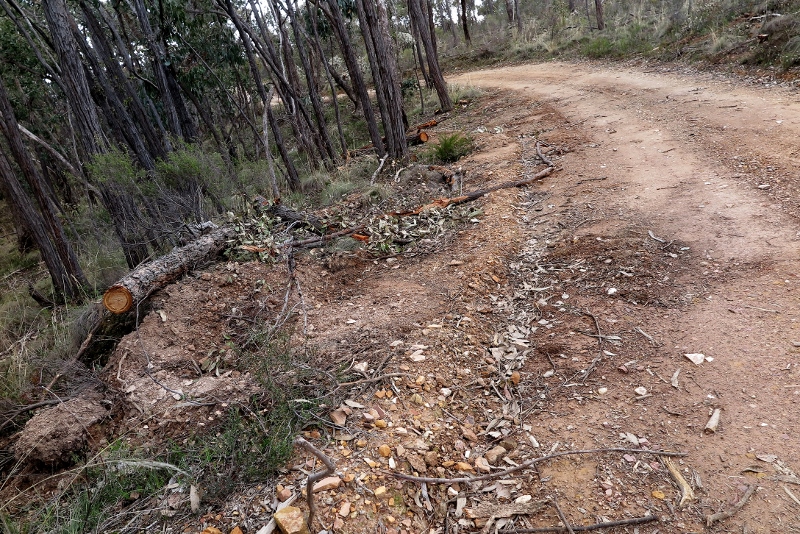So, dry or not, it’s still Spring, the time to get out and see what our bush can do.
And, of course, we know that our forest managers are aware of the severe conditions, and keen to do everything they can to maintain resilience in the face of these conditions. Right?
Maybe not.
Those visiting one of our wildflower hotspots had better brace themselves for yet another experience of land managers’ road upgrades.
Morgan’s Track has well and truly got the treatment from the grader: gouging of track edges, numerous scalped areas where machines have turned around, a tendency to widen the track, plus some intriguing vegetation removal. It’s not always clear what this last is for. We are often told by managers that crews are instructed to ‘stay inside the track footprint.’ This has now become a bit of a joke.
Here’s a question: if road maintenance crews are given the job of cleaning the gutters in Swanston Street, would they think it a good idea to gouge a few inches, or a few feet, out of the footpath? Possibly not: but DELWP has traditionally, it seems, considered the verges of bush tracks to be pretty flexible. A gouge here, a scalp there: it’ll all come back OK.
Maybe: but in increasingly severe climatic conditions, managers’ responsibility is to improve natural resilience, not scrape away at it…or at least, you’d think so…





 Click on image for info/order page
Click on image for info/order page Click on image for info/order page
Click on image for info/order page Click on image for info/order page
Click on image for info/order page





















This sort of soil disturbance leads to the proliferation of massive growth of species like Cassina arcuata [ Coffee Bush] along the sides of these tracks, making them severely overgrown and highly flammable. Wildlife carry the seed further into the bush and over the years change the character by increasing the density of the understorey.
Having observed the bush over 40 years in our area we see far greater fire risk and no evidence of follow up work after track UPGRADES.
It’s also where weeds spread to, likely brought in by vehicles. Similar road grading messes appear in places like the Brisbane Ranges, where on the downhill slope where it’s less exposed there used to be Corybas orchids. Now the graded soil/rock and vegetation debris covers some of the road-edge sites. I don’t have a solution. Just complain I suppose. Seems to be happening in so many places.